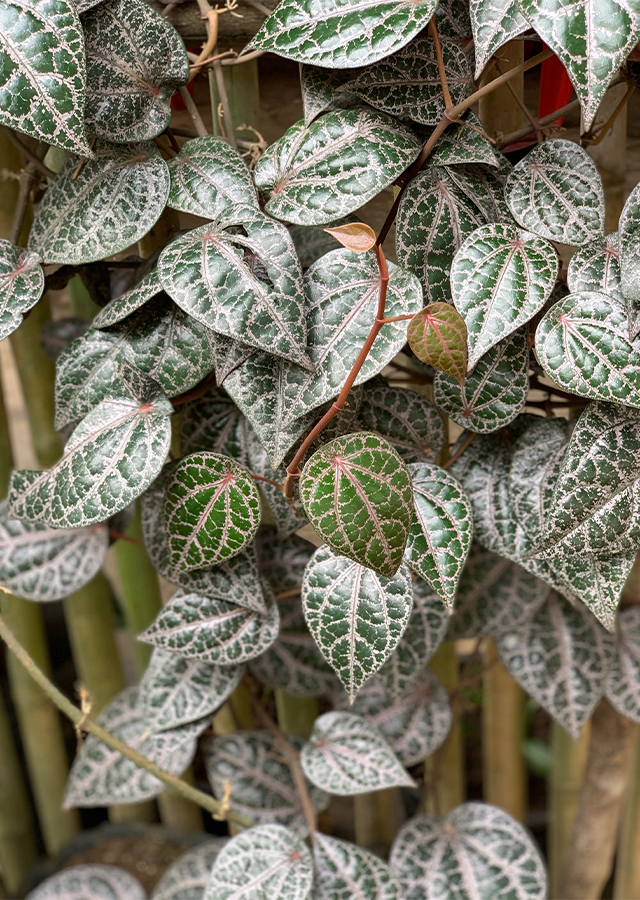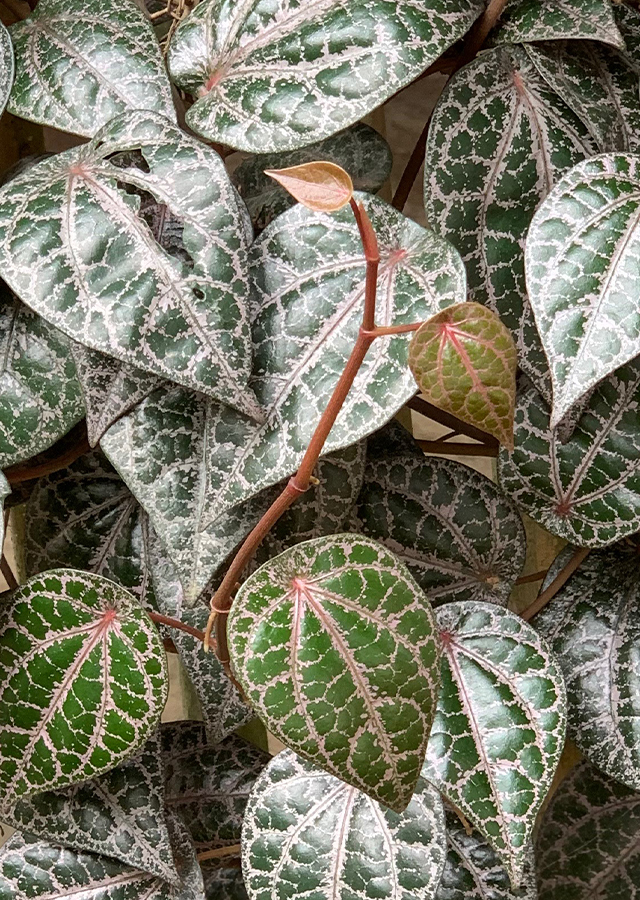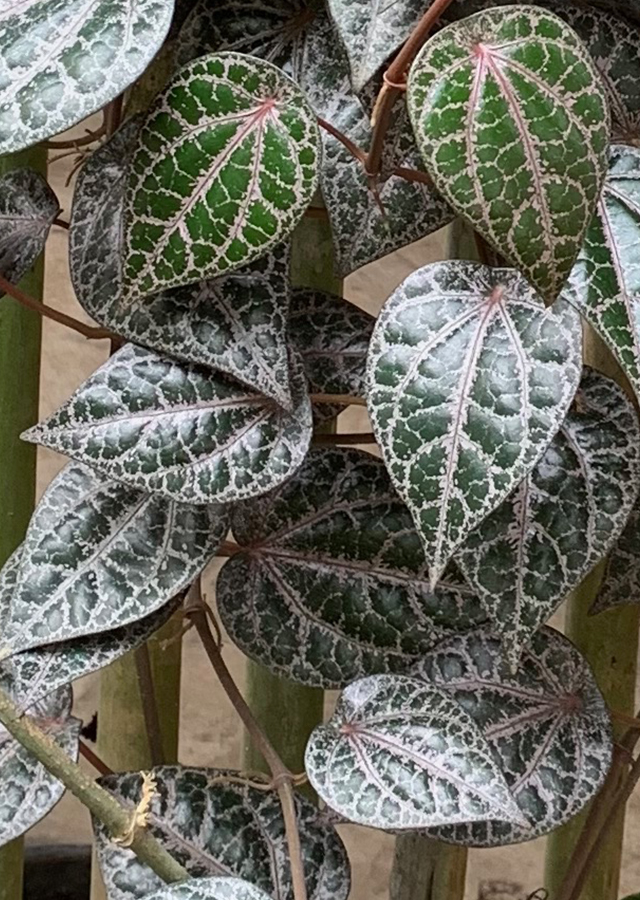Red Betel Leaf
Piper ornatum N.E.Br.
Piperaceae
Location in our garden
Green House



Synonym
-
Habitus
Climbers. A perennial climbing or trailing vine, 1-4 m long
Part Used
Leaves
Growing Requirements
Need Shade
Habitat
Forest
Overview
This herbal plant is native to Sulawesi-Indonesia. Red betel is believed to contain a number of substances that are important for human health. Some of the red betel leaves were used as a hand sanitizer. It is known for its ornamental foliage. In Indonesia, it is used in religious ceremonies and folk medicine. It is reportedly used to treat cancer, hypertension and diabetes. Medical practitioner consultation is needed before attempting to self-medicate with this plant.
Vernacular Names
Celebes pepper (English), Prydnadspeppar (Swedish).
Agroecology
It grows best in a moist and humid environment and should be exposed to filtered sunlight. Required a minimum temperature of 15 °C or they will shed most of their leaves. They do not flourish if subjected to fluctuating temperatures and dry air.
Morphology
- Stems - greenish brown, circular, segmented and is the basis exit.
- Leaves - 5-8 cm and a width of two-5 cm, single leaves are heart-shaped, pointed finish, growing alternately, stemmed, and issued a savory smell when beaten.
- Flowers - bract ± 1 mm elliptical. In adult males grain size is about 1.5 to 3 cm and there are two brief stamens being on feminine heads of its length is ready 1.5 to 6 cm the place there are stigmas three to 5 pieces of white and yellowish inexperienced.
- Fruits - round berry fruit grayish inexperienced. Its roots riding, round and yellowish brown.
Cultivation
By stem cuttings - Place the cutting in a plastic bag or heated propagation case and stand it in bright filtered light at a temperature of about 23 °C. When renewed top growth shows that rooting has occurred – normally in four to six weeks – uncover the rooted cutting gradually over a course of about two weeks.
Chemical Constituents
Alkaloids, flavonoids, tannins, saponins, terpenoids, phenols, karvakol, eugenol, essential oils, neolignans.
Traditional Medicinal Uses
- The plant acts as antioxidants, antidiabetic, anticancer, and anti-inflammatory.
- To scale down blood sugar levels and manipulate blood sugar diabetics.
- Capabilities flexible for hypertension, hepatitis (liver infection), irritation of the prostate, eye infection, ulcers, breast cancer, uterine cancer, coronary coronary heart sickness, tuberculosis, piles / haemorrhoids, kidney disorder, painful joints, and develop stamina.
- Some crimson betel leaves are boiled can be utilized as a mouthwash and do away with dangerous breath, treating nosebleeds, overcome purple eye, and vaginal discharge in females.
- The purple betel leaves are processed into crimson betel tea can be utilized as a common medicine to deal with gout, ulcers and physical exhaustion.
- Natural medicine to treat diseases such as cancer, gout, hepatitis, fatigue and ulcers, infection, hypertension (high blood stress), and ambient.
Part Used
Reference Sources
- Widiyastuti, Y., Haryanti, S. & Subositi D. (2016). Karakterisasi morfologi dan kandungan minyak atsiri beberapa jenis sirih (Piper sp.). Proceeding of Mulawarman Pharmaceuticals Conferences, 3(2), 474-481. https://doi.org/10.25026/mpc.v3i2.148.
- Piper ornatum N.E.Br. in GBIF Secretariat (2021). GBIF Backbone Taxonomy. Checklist dataset https://doi.org/10.15468/39omei (Accessed via GBIF.org on 2021-12-03).
